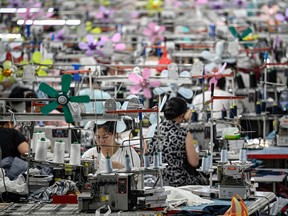Cancelling the exemption has plunged the industry into chaos, sowing panic and confusion among retailers, shippers and logistics providers

What is the ‘de minimis’ rule?
The de minimis exemption — derived from Latin meaning “too small to be of significance” — was an amendment to the Tariff Act of 1930 and was enacted by Congress in 1938 to “avoid expense and inconvenience” to the government on imported goods valued at US$1 or less. Over the years, Congress has revised the de minimis threshold several times. Starting in the 1990s, the U.S. began using the exemption — also referred to as Section 321 — to minimize transaction costs for businesses and consumers and to reduce trade barriers for U.S. exports. When Congress raised the threshold from US$200 to US$800 in 2015, the U.S. experienced a boom in de minimis imports. The U.S. received over 1.4 billion such packages in 2023, up from 153 million in 2015. Sellers and shippers of all stripes, from Chinese e-commerce giants such as Temu and Shein to small- and medium-sized Canadian retailers have leveraged the rule to efficiently transport low-value goods directly to U.S. consumers. Around 80 per cent of all e-commerce shipments into the U.S. use de minimis, according to a 2022 U.S. congressional research report. The popularity of the exemption has also brought scrutiny: Some American lawmakers have argued that the rule allows narcotics or goods made with forced labour to flow into the country more easily.
How did cancelling the exemption disrupt e-commerce?
Trump’s swift move to dismantle Section 321 for China-origin goods had e-commerce players scrambling to figure out how to comply. Many third-party logistics (3PL) providers transporting goods from Canada to the U.S. simply stopped loading and moving goods originating from China. If de minimis clearance is off the table, sellers and shippers will be required to fill out a “formal clearance” form — which means providing much more detail regarding the contents and origin of the shipment, alongside additional duties on the goods. E-commerce players are staring down a slew of “substantial” costs beyond simply paying new tariffs on goods, said Tony Pelli, a director at BSI Consulting, a supply chain management specialist. Those include “time costs” from figuring out which packages are subject to the duties and costs associated with ensuring tariffs are applied correctly, such as through hiring a customs broker, Pelli said. Though Trump has now paused cancelling de minimis for China-origin goods, some in the industry warn that this will only bring temporary respite. “Things have reverted to what they were a week ago, but it’s inevitable that the change will occur” likely in the next few months, said Derek Lossing, a supply chain and logistics consultant and founder of Cirrus Global Advisors Inc.
How would a cancellation of Section 321 affect Canadian businesses?
Canadian retailers that source from, or manufacture goods in China would be among the hardest hit. “For previously tariff-free de minimis goods from China, you would now need to pay a regular 16 per cent tariff, 7.5 per cent tariff on Chinese products, and the new 10 per cent tariff on China-origin goods,” Pelli said. Businesses face a few unattractive options: bear the costs of the new tariffs, pass them on to consumers, or find cost-saving measures elsewhere.
Compliance with a de minimis cancellation could force businesses to overhaul their operations and supply chains. Canadian companies would likely be forced to move toward more bulk shipments to save on cost, Pelli said. “This means waiting until there’s a sufficient quantity of made-in-China products bound for the U.S.” to justify moving it across the border, he said, something that would require more warehouse space. Others will likely explore shifting more inventory directly into the U.S., he added.
Shippers and logistics service providers, meanwhile, are devising new processes for payment and billing duties and tariffs back to brands, said Jarrett Stewart, senior vice-president of commercial at Toronto-headquartered 3PL provider GoBolt. “This can become a complicated process as the bills due when crossing can be five to six figures, depending on how much volume you’re moving.” Canada is the third-largest source of U.S. imports — moving nearly US$437 billion of goods into the country in 2022 — behind Mexico and China. In 2021, Canada contributed roughly over $5 billion of the U.S. ‘s de minimis imports; China by comparison, accounted for US$45 billion.
Who else in e-commerce would be affected?
Chinese e-commerce giants will likely use the temporary reprieve to test new compliance processes to prepare for the forthcoming de minimis ban. Some will fine-tune the data that they transmit to U.S. customs, while others will be ensuring that their systems can transmit specific new customs details to their brokers, Lossing said. While e-commerce firms are adjusting their supply chains, Lossing warns that the processes will require months to play out. “We will see Temu try to accelerate the number of U.S. sellers with inventory already in the U.S., while Shein will continue to accelerate on-boarding new vendors in Brazil, Turkey and Bangladesh to diversify their supply chains,” he said. “Both companies have been working on this for the last year. But none of this can be fully done in one to two months…..It’s now all hands on deck to continue the acceleration of these initiatives.”